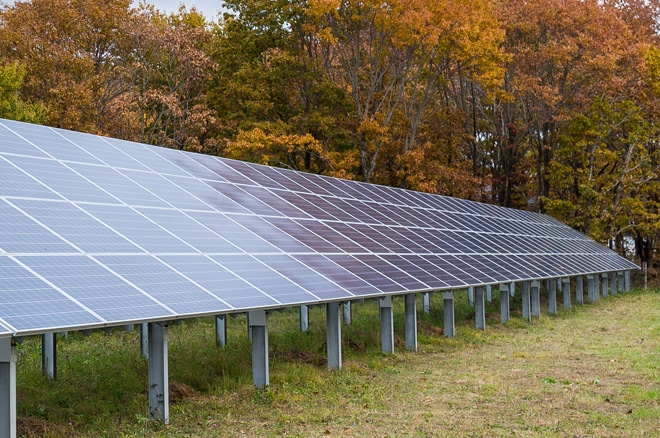How Solar Panels Work

How Solar Panels Work
Typically, when you see a solar panel on a roof, it is a photovoltaic (PV) panel and covered with a tempered glass enclosure to protect it from the elements. Assemblies of solar cells are used to make solar panels, solar modules, or photovoltaic arrays. The basics of how the solar cell converts light energy into electricity by the photovoltaic effect can be found here.
There are numerous technology choices in terms of cells, panels, and configurations, plus so many different manufacturers creating many different types of solar panels. Get professional guidance from Pur Solar before purchasing your solar electric system.
Sunlight:
The sun’s light contains energy, it produces enormous amount of energy due to fusion reactions within its core. Energy is ejected from the sun where some of it travels to the earth’s surface as photons. When the light hits an object the energy turns into heat, some objects contain materials that when light hits them they absorb photons and and then release electrons.
Solar Cell Convert Photons to Electrons
Solar panels are comprised of several individual solar cells also called PV cells, the basic function of PV cells is to convert protons (light) into electricity (DC-direct current). PV cells harness solar radiation with a semiconductor material (such as silicon) to produce a photoelectric effect; photo meaning “light” and voltaic meaning “electricity”. This means that the energy of the absorbed light is transferred to the semiconductor and electrons are knocked loose from the semiconductor material.
Silicon Layers
Two layers of silicon make up the bulk of the PV cell. The silicon is combined with an element such as phosphorus, because pure silicon is not a good conductor of electricity. Phosphorus has five electrons to share, silicon can only take four of the five electrons, leaving one free electron (negative charge) – called a free carrier – an electrical current is formed.
Electric Field
To generate electricity, need to establish an electric field. Similar to a magnetic field, the opposite poles of two magnets attract each other, as do the positive and negative charges in an electric field. When the PV cell is created the two different silicon layers are brought together, they create an “opposites attract” electric field. Once the bottom layer has gained extra electrons, it becomes negatively charged, while the top layer has gained a positive charge there.
Powering a Building
Electrons flow as electricity via the metal conductor strips into a wire and to an inverter inside the house. The inverter converts the direct current (DC) coming from the PV cell into the alternating current (AC) electrical power that appliances can use. Electrons also flow out of the house and back to the solar panel, creating the closed loop necessary to maintain the flow of electricity.
